
Succulents 101
By Chris Edmunds
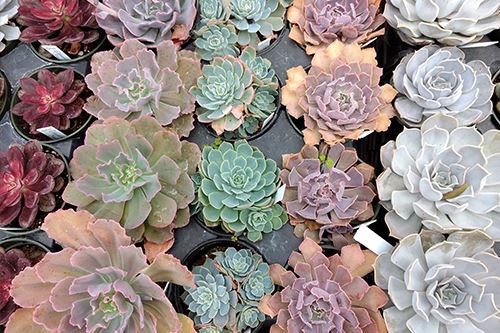
Succulents are the biggest plant trend at the moment, and if you’ve even glanced at Instagram or Pinterest in the last year, you already know they’ve taken over. These days, I see them everywhere – in shops, in offices, on patios and porches, and of course, at Kaw Valley Greenhouses. We've got a particularly impressive selection at our greenhouses. However, it struck me while browsing succulents that, despite a pretty impressive range of succulent and cacti species, the label on the pot doesn’t always tell you much about the actual species or how to care for them.
What Are Succulents
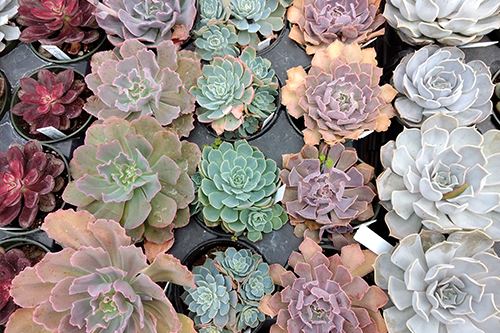 Succulents are a category of plants that store water in their leaves, which gives them a plump, “juicy” appearance. Succulents are native to hot, arid climates, where water is in short supply. Due to their native climate, succulents like to be in full sun. However, they don’t need frequent watering, which makes them great houseplants for those who like to keep their lives as low-maintenance as possible. They really shine in patio planters or low bowls on the front step or back patio in full sun. They transition easily to a sunny window indoors where they can ride out the winter.
Succulents are a category of plants that store water in their leaves, which gives them a plump, “juicy” appearance. Succulents are native to hot, arid climates, where water is in short supply. Due to their native climate, succulents like to be in full sun. However, they don’t need frequent watering, which makes them great houseplants for those who like to keep their lives as low-maintenance as possible. They really shine in patio planters or low bowls on the front step or back patio in full sun. They transition easily to a sunny window indoors where they can ride out the winter.
Types of Succulent Plants
There is a dizzying number of succulent species, but generally there are a few different visual categories I like to group them in: cacti, rosette-form, and what I’ve affectionately dubbed “leafy”. To be considered a cactus, a succulent must have areoles, or bumps that produce spines or flowers. Rosette-forming succulents have that ultra-trendy symmetrical look and, as their name suggests, form beautiful rosette patterns with their foliage. Leafy succulents are not quite cacti, but definitely aren’t rosette forming - they just look like plants who happen to be a little bulky.
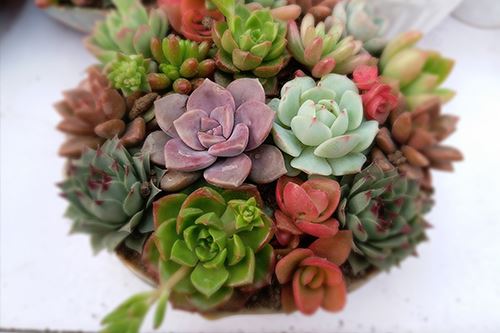
Succulent Care
Now that they’re so trendy, I get asked all the time how to care for succulents. They’re also all fairly easy to care for. Because succulents aren’t from damp climates, they’re a little touchy around water. They need soil with very good drainage, and fertilizer no more than once per month. When repotting, avoid covering any part of the plant with soil. The less moisture your succulents sit in, the better. If you care for your succulents indoors, make sure they’re in a spot where they get at least a half day to a full day of sun.
Now that you’ve got the basics for identifying and caring for succulents, here are some beautiful and popular varieties to add to your plant collection.
Small Succulents
These varieties start small and are very slow-growing, so they are ideal to group in a pot together to display on desks, shelves, or window sills:
Donkey Tail is a leafy succulent that looks like a braided horse (or donkey - hence the name) tail. These have stems that are easy to snip and start as additional new plants.
Echeveria, of which we carry many varieties, have gorgeous rosettes in different foliage colors, making them incredibly popular. They are the new poster children for succulents and are many people’s go-to when decorating and crafting with succulents. The symmetrical shape of the rosette is mesmerizing, and many of them will grow smaller rosettes around the main one, much like ‘Hen and Chicks’ sempervivum (but not winter hardy like ‘Hen and Chicks’). The foliage color can be a gorgeous silvery-blue (‘Subsellis Blue’) to blackish (‘Black Prince’) to orangy-gray (‘Perle Von Nurnberg’) to emerald green (‘Spruce Oliver’). Some have unique textures, such as the ruffled ‘Shaviana’, the fuzzy ‘setosa Arrow’, the bulbous ‘Roundleaf’, and the totally inside-out-looking ‘Topsy Turvy’.
 Painted Echeveria is different from most other echeveria in that it doesn’t grow in a rosette form. The leaves look like someone painted dark burgundy stripes on them, and they have a multi-branched habit that gets taller than other echeveria. The height and unique foliage is perfect for a succulent combination planter.
Painted Echeveria is different from most other echeveria in that it doesn’t grow in a rosette form. The leaves look like someone painted dark burgundy stripes on them, and they have a multi-branched habit that gets taller than other echeveria. The height and unique foliage is perfect for a succulent combination planter.
Flapjacks (Kalanchoe thrysifolia) have large, flat, disc-shaped leaves (like small pancakes) that don’t look like any of your other plants. The attractive silver coated blue-green leaves get reddish leaf margins when exposed to more sun.
Zebra Plants (Haworthia fasciata) are dark green with little white stripes in a bold pattern, making them a style statement in a tiny package. These are about the slowest growing succulents we carry and are perfect for small containers.
String-of-Pearls (Senecio rowleyanus) is one of our favorites, especially as a trailing succulent. They look like fresh green peas threaded on a string. We love how they look spilling over the edges of succulent combination planters!
Larger Succulents
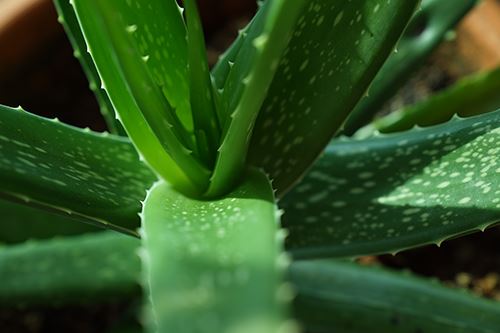 These succulents are gorgeous when allowed to grow larger. For all the low-maintenance and stylish appeal of a succulent but in a bigger package, try these varieties:
These succulents are gorgeous when allowed to grow larger. For all the low-maintenance and stylish appeal of a succulent but in a bigger package, try these varieties:
Aloe Vera is easy to find and might start desk-sized but will quickly grow much larger with a few years and only a little love. They’re pretty and useful, as their thick leaves are filled with a gel that soothes sunburns and itches of all shapes and sizes.
Aptenia ‘Variegata’ is a fast-growing trailing succulent that have small reddish blooms resembling Ice Plant blooms. The variegated foliage is beautiful in hanging baskets.
Bulbine ‘Athena Compact Yellow’ or ‘Athena Compact Orange’ are unique for their bright colored dainty blooms. Most succulents have insignificant blooms, but these are an exception. They need to be planted outdoors in full to part sun for profuse blooms all summer long.
This list barely scratches the surface of all the options - there are over 40 varieties of Sedum alone. Some people even collect succulents, and I’m starting to like the idea myself. When you have that many unique-looking, low-maintenance options, why the heck not?
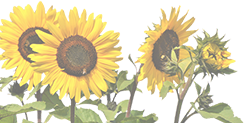
Need some advice on how to start a beautiful garden? Sign up for our email newsletter, and receive free gardening articles, resources, and container designs to your inbox.
